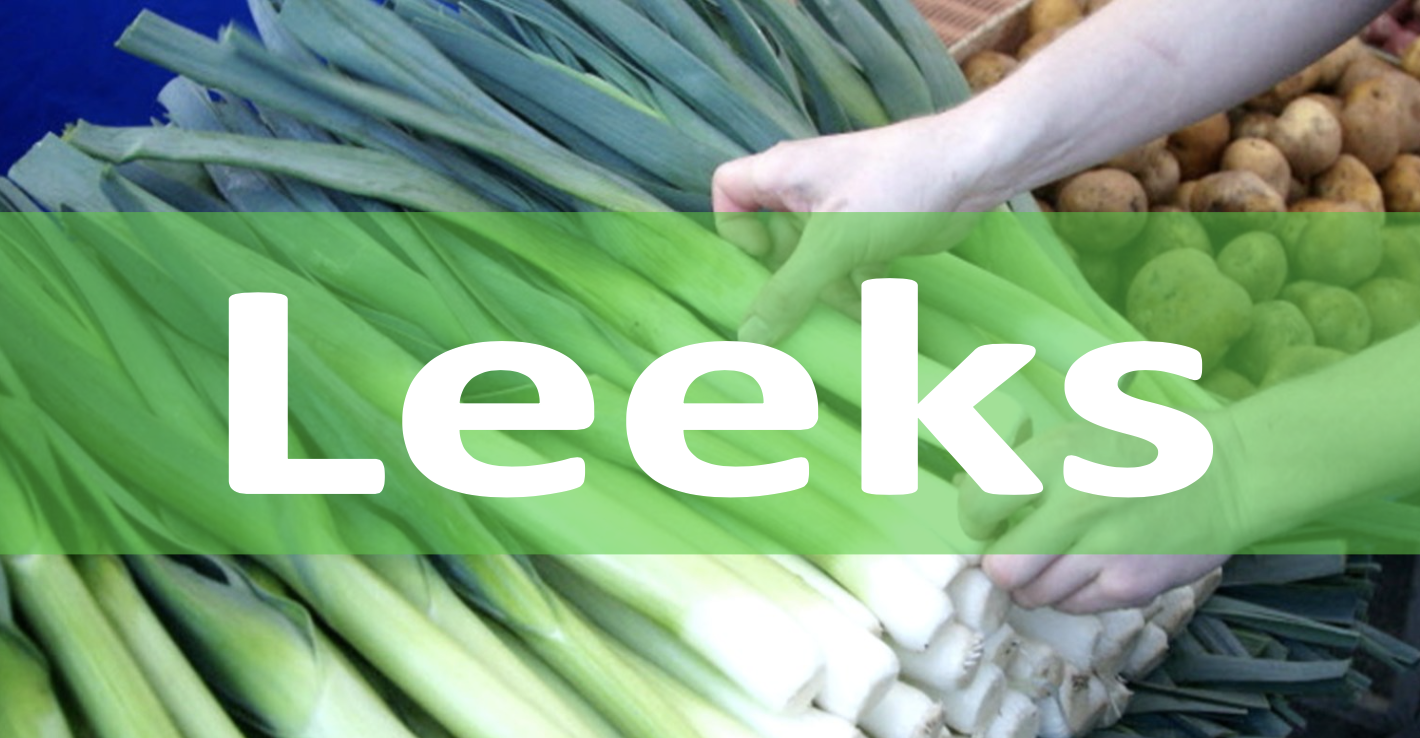
Lesser-Known Leeks
Learn More about links (including recipes) HERE
By Stephanie Polizzi, MPH, RDN, DipACLM
Leeks are a member of the allium family which also includes onions, scallions, shallots, chives and garlic. Leeks look similar to green onions (scallions) but are much larger, up to a foot long and 1-2 inches in diameter. They have a mild, sweet onion flavor and can be used to season other dishes or cooked as a delicious side dish.
Leeks have many of the same healthful nutrients as other allium vegetables, although research on their health benefits is limited. They are an excellent source of antioxidants like vitamins C, K and beta-carotene that have anti-aging and anti-inflammatory benefits. Several of the carotenoids include lutein and zeaxanthin which protect the eyes, reducing risk of cataracts and age-related macular degeneration. Vitamin K helps to maintain healthy bones and reduce risk of osteoporosis.
Leeks are healthy for your heart. They are good source of folate and B6, which work to keep homocysteine levels low, preventing artery damage and reducing formation of blood clots. Kaempferol, helps the body to produce nitric oxide, a gas that triggers arteries to relax and widen, lowering blood pressure and improving blood circulation. Nutrients in allium vegetables also contribute to reduced risk of stroke. Other B vitamins in leeks include thiamin (B1), riboflavin (B2), niacin (B3) and smaller amounts of pantothenic acid.
Like other allium vegetables, leeks have sulfur-containing compounds which are associated with reduced risk of cancer, particularly breast and colorectal cancer. They also contain minerals like iron for maintaining red blood cells that carry oxygen to tissues, and manganese, important for regulating nerve function. And leeks contain dietary fiber, which feeds your healthy gut microbiome and contributes to boosting immunity.
Most of the nutrients in leeks are concentrated in the bulb and lower leaf section, with the exception of folate and B6 which are found throughout the greens and bulb.
When choosing leeks, look for dark green leaves and white bulbs. Store unwashed in the refrigerator until ready for use, 2-3 days. Remove outer green leaves and cut off root fibers (if present). Then wash by fanning out the leaves or slicing lengthwise and rinsing under running water. Slice for your recipe and let rest 5 minutes. Like other allium vegetable, this helps retain some of the healthful nutrients.
A quick sauté or wilting of leeks also retains nutrients. Try steaming with a small amount of broth or water about 4-6 minutes until soft. Leeks can be enjoyed as an ingredient in soups, stews or casseroles, or enjoyed as a side dish. Garnish leeks with fresh lemon juice and thyme. Leeks are delicious used raw in salads or dips. They are milder in flavor than onions and will not overpower delicate dishes like mashed potatoes.
Although leeks are lesser-known allium vegetables, they are usually available year-round in supermarkets. Add variety to your meals by adding leeks to your grocery list and nutrient density to your New Year’s resolutions.
